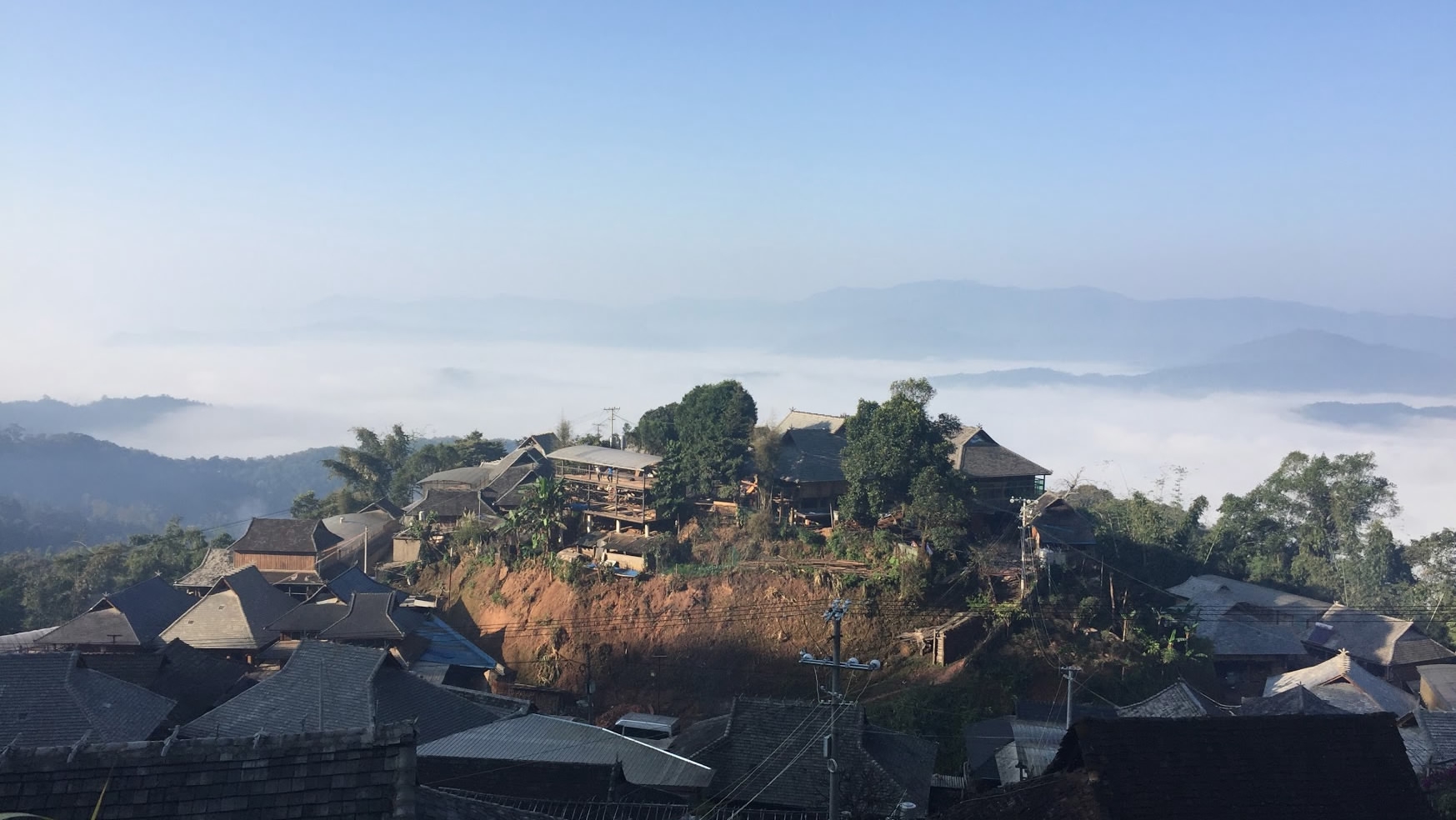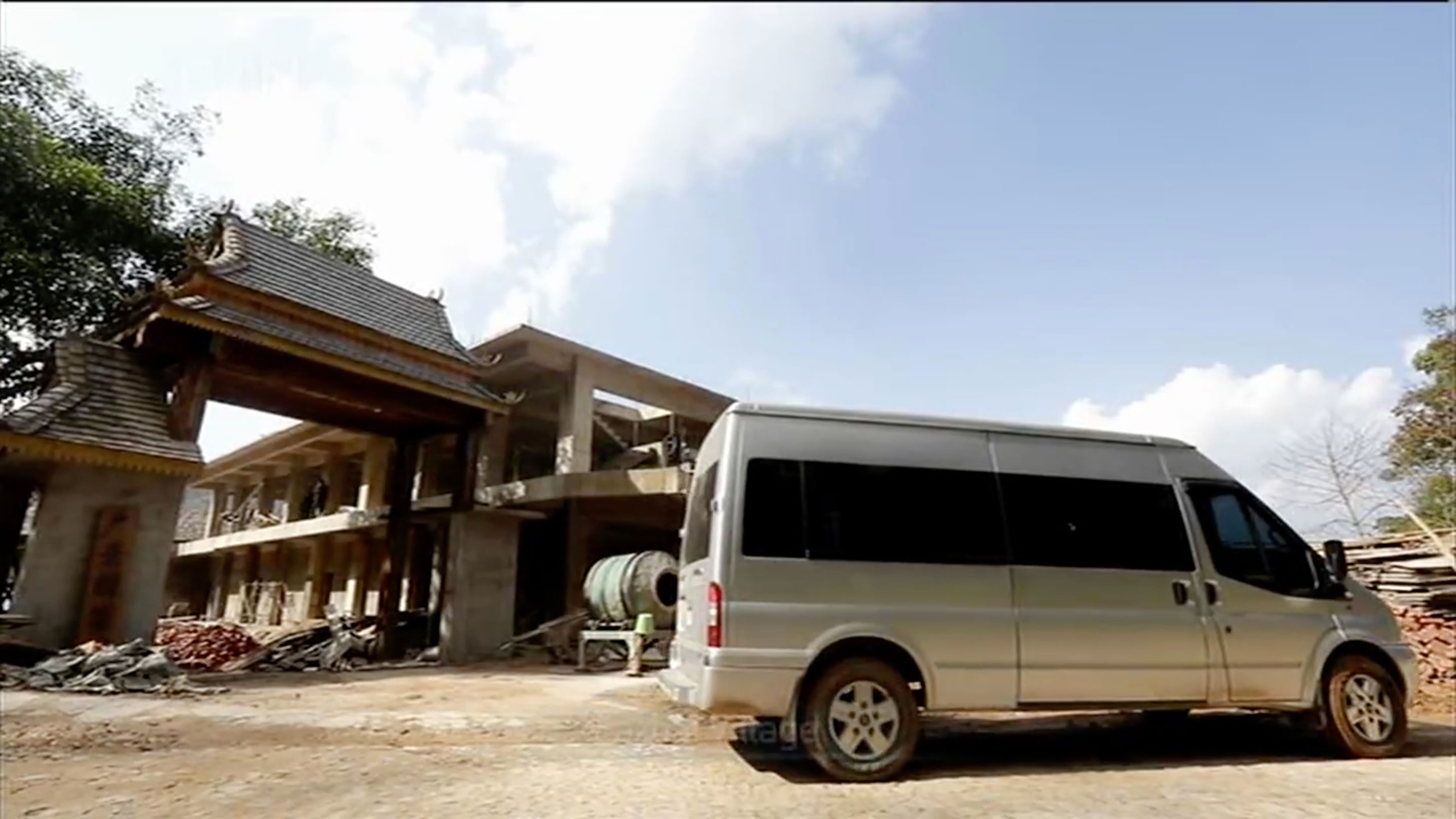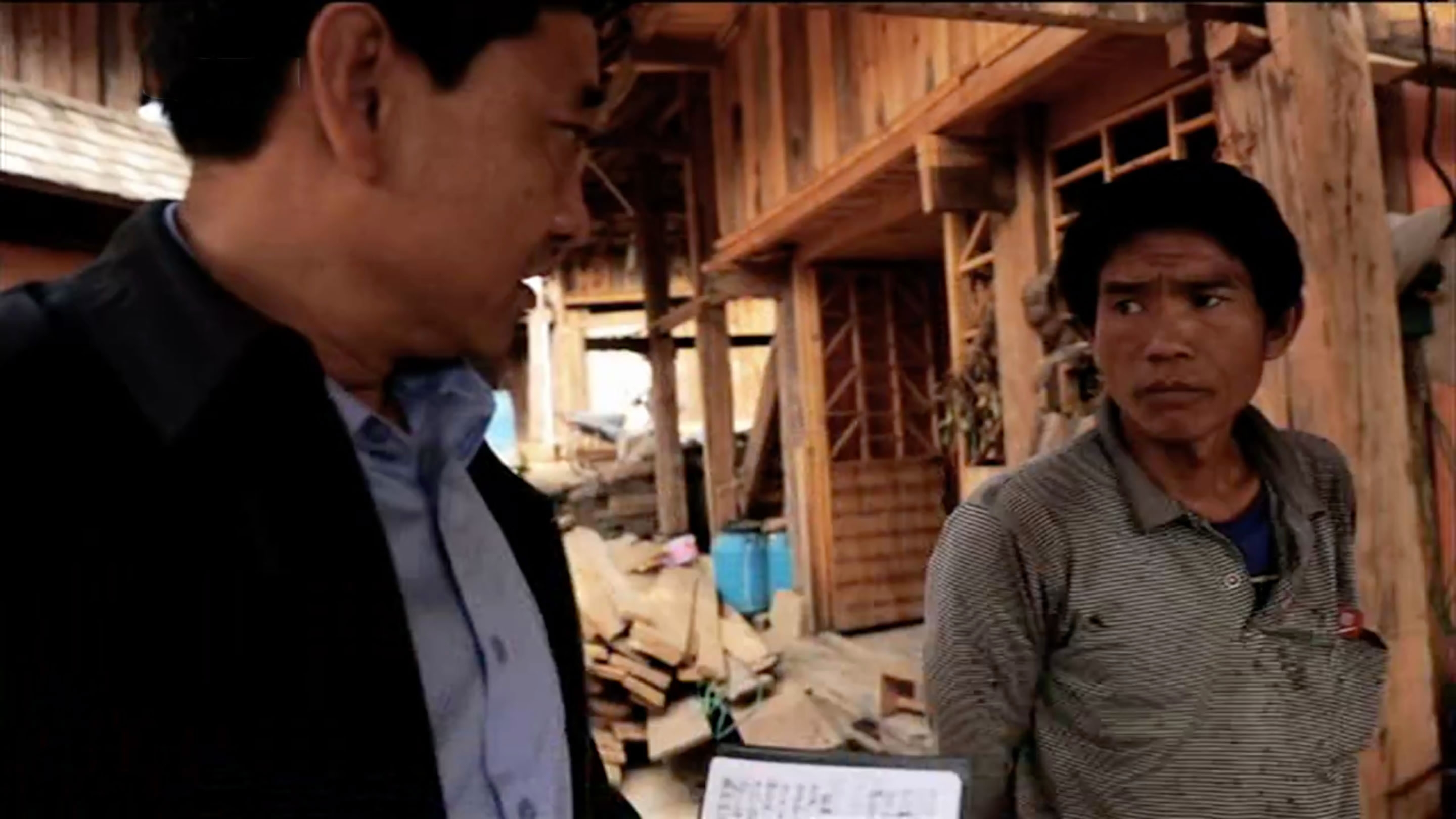
China
15:51, 08-Mar-2018
An uphill battle: Preserving traditional architecture on Jingmai Mountain
CGTN

By Laura Schmitt
In the south of Yunnan Province, close to the Myanmar border lies the remote Jingmai Mountain, lies a place covered with tea plantations and dotted with picturesque minority villages. The architecture in this area is in the Bulang and Dai ethnic style, characterized by wooden stilt houses with triangular shapes on their distinctive roofs.
Here, as elsewhere in China, the local villagers are eager to modernize, even though that means abandoning centuries-old practices in the process. The local government has been working to preserve this unique type of architecture, in a bid to gain World Cultural Heritage status in the coming years.

A traditional Bulang wooden stilt house can last for 20-30 years. /CGTN Photo
A traditional Bulang wooden stilt house can last for 20-30 years. /CGTN Photo
To this end, a pair of architects from Beijing has been brought on board to ensure the necessary standards are being met. One of them is Zou Yiqing, an architect at the cultural heritage protection department of Tsinghua University’s Architectural Design and Research Institute. She has devoted the past two and a half years to the project, studying all 14 villages on Jingmai Mountain.
"In drawing up the cultural heritage plan we lacked basic data," she says. "So, in the beginning, we spent a lot of time in the area doing research. We drew up a plan for the traditional villages and submitted it to the State Bureau of Cultural Relics. We were granted funds to carry it out."
However, things did not go according to plan.
Many of the villagers, in their eagerness to modernize, spent the grant they were given on constructing houses that were not in line with the traditional style of architecture needed to apply for World Cultural Heritage status. They boarded up the lower floor of their homes, made significant alterations to the traditional layout, and started using materials such as concrete, rather than timber. To make matters worse, a lack of clarity on the part of the local government as to what was and was not allowed, caused further friction between the villagers and the experts attempting to preserve tradition.

During a March 2016 visit, Rediscovering China was introduced to Dao Chunmei, the sister of a homeowner. She aired her grievances to Qiu Yukui, Zou Yiqing’s fellow architect from Beijing.
"I said I wanted to use old wood as decoration and they agreed," Dao says. "We wanted to use wood from the old houses. They agreed, so we bought wood from two old houses. But then they changed their minds. You know, they are inconsistent. Before you came, they told us we should follow your instructions. You drew up a plan for us, and we were happy with it. Everyone agreed to the plan, but eventually, they vetoed it."
Such conflicting messages, along with skepticism on the part of the villagers regarding the value of staying stuck in the past, have made the architects’ work difficult. But, however frustrated they may feel, they have to try and understand the villagers’ position, as Zou Yiqing explains.
"The village has been changing daily as the villagers have been building. It is normal. I am an outsider working in the village. We have our own expertise and background. We cannot help judging their way of life and the village’s appearance. I do not want to be judgmental. I try to understand why they are doing this. If we, the cultural heritage protection experts and architects, tell them they cannot do this, they will refrain from building in the short term, but once we leave there will be an explosion in construction. This is not a sustainable approach to cultural heritage protection."

Today, two and a half years after Zou Yiqing started work on the project, the challenges remain as big as ever.
"Progress has been slower than I anticipated, mainly because management has not been as efficient as it could be," she says. “The project has been lacking both manpower and expertise."
In order to speed up progress and offer a more strategic vision, last February an expert commission was formed.
The 10-person team is made up of university professors and government officials, with specialties ranging from architecture to cultural preservation and even science and technology. Zou Yiqing hopes the commission will be able to deal more effectively with the challenge of convincing the local villagers to stick to the traditional way of building.
"There have been many challenges, particularly people’s greed when it comes to the grant money," she says. "We really need to build up an effective management strategy and work hard to change local attitudes and awareness. It takes patience."
Rediscovering China is a 30-minute features program offering in-depth reports on the major issues facing China today. It airs Sunday at 10.30 a.m. BJT (0230GMT), with a rebroadcast at 11.30 p.m. (1530GMT), as well as Monday 8.30 a.m. (0030GMT) and Friday 1.30 p.m. (0530GMT).

SITEMAP
Copyright © 2018 CGTN. Beijing ICP prepared NO.16065310-3
Copyright © 2018 CGTN. Beijing ICP prepared NO.16065310-3